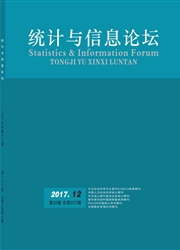

 中文摘要:
中文摘要:
中国城镇劳动力市场分割状况导致收入差距不断增加,将收入流动性与收入极化指数的测量相结合,可更好地分析不同劳动力市场领域收入极化产生的原因。使用中国健康与营养调查(CHNS)的微观数据,将极化指数P分解为结构化流动性极化指数PS(工资水平的变化)和交换流动性极化指数PE(个人的社会地位、职业特征的流动变化)两个部分,结果表明:学历和雇佣形式劳动力市场领域产生收入极化的主要原因是结构化流动性,而交换流动性是职业性质和企业所有制劳动力市场领域产生收入极化的主要原因。
 英文摘要:
英文摘要:
Chinese income gap is increasing under the China's urban labor market segmentation, combine the measurement of income mobility and polarization index can better analyze the polarization of labor market, this article use Chinese Nutrition and Health Survey (CHNS) micro data, and divided the polarization index P into two parts, the structured mobility polarization index PS(change over time in the overall, between-and within-groups inequality) and exchange liquidity polarization index PE(changes over time in the ranks of the individuals). The results show that the reason of labor market polarization of education and employment is structural liquidity, and the reason of labor market polarization of professional nature and enterprise ownership is the exchange of liquidity.
 同期刊论文项目
同期刊论文项目
 同项目期刊论文
同项目期刊论文
 期刊信息
期刊信息
